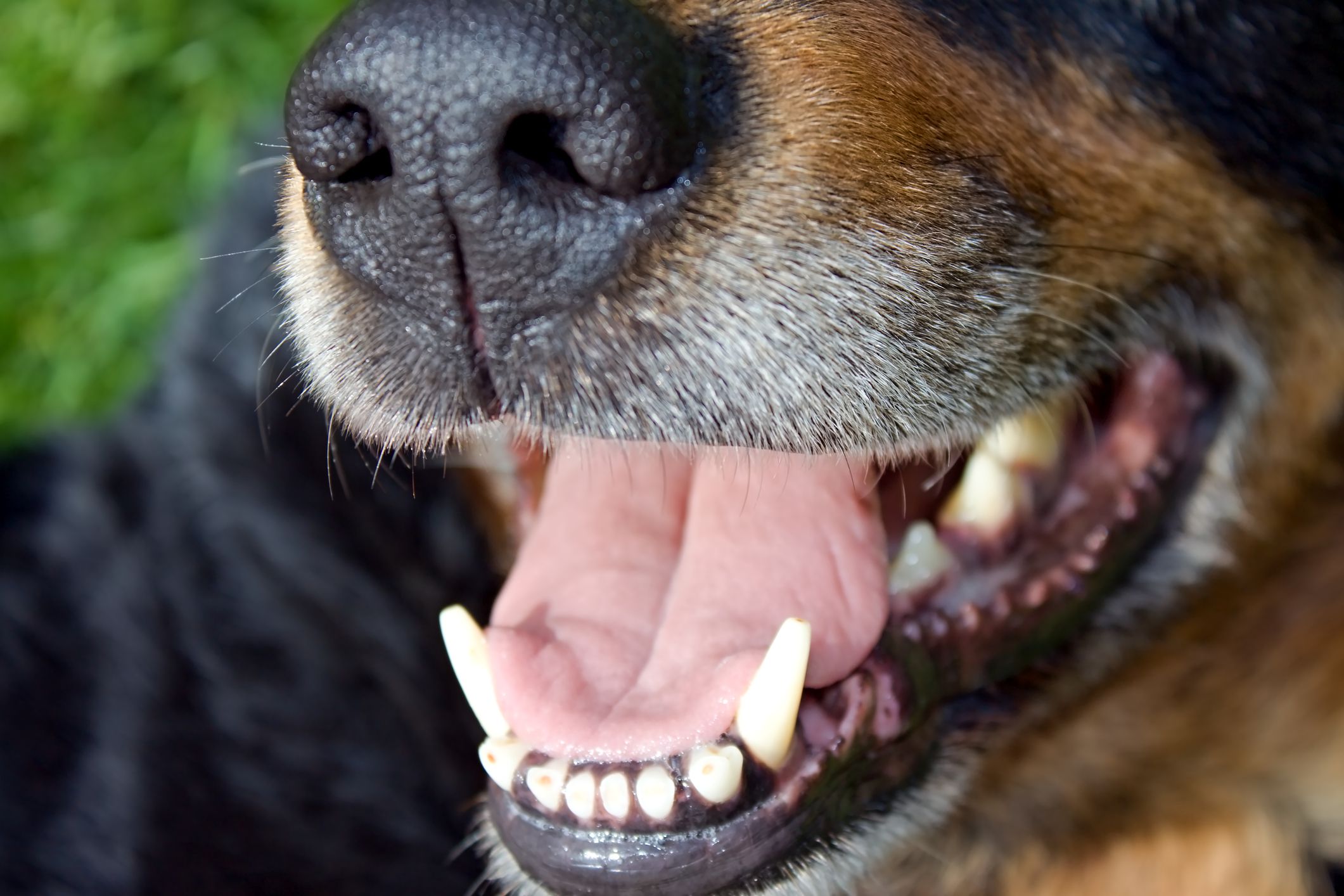Home>Health & Wellness>Common Health Issues>Muscular and Joint Health>What Does Arthritis Look Like In A Dog?


Muscular and Joint Health
What Does Arthritis Look Like In A Dog?
Modified: March 1, 2024
Learn how to recognize the signs of arthritis in your dog and how to support their muscular and joint health. Discover tips for managing arthritis in dogs.
(Many of the links in this article redirect to a specific reviewed product. Your purchase of these products through affiliate links helps to generate commission for Pawsomeoldies.com, at no extra cost. Learn more)
Table of Contents
Introduction
Arthritis is a common condition that affects not only humans but also our beloved canine companions. Just like in humans, arthritis in dogs can cause discomfort, pain, and reduced mobility. Understanding the signs and symptoms of arthritis in dogs is crucial for early detection and effective management of this condition.
As responsible pet owners, it's essential to recognize the potential signs of arthritis in our furry friends. By being proactive and observant, we can ensure that our dogs receive the care and support they need to maintain a good quality of life, even in the presence of this challenging condition.
Arthritis, also known as osteoarthritis or degenerative joint disease, occurs when the cartilage within a joint deteriorates, leading to inflammation, pain, and stiffness. This can result in reduced mobility and discomfort for our canine companions. While arthritis is more commonly associated with older dogs, it can also affect younger animals, especially those with genetic predispositions or previous joint injuries.
In this article, we will explore the symptoms of arthritis in dogs, how veterinarians diagnose this condition, the available treatment options, and effective strategies for managing arthritis in dogs. By gaining a comprehensive understanding of arthritis and its impact on our canine companions, we can provide them with the care and support they need to live happy, comfortable lives.
Read more: What Does A Dog’s Eye Look Like
Symptoms of Arthritis in Dogs
Arthritis in dogs can manifest in various ways, and recognizing the symptoms is crucial for early intervention and management. While dogs are adept at masking discomfort, there are several signs that may indicate the presence of arthritis:
-
Limping or Favoring a Limb: Dogs with arthritis may limp or favor one or more limbs, especially after periods of rest or physical activity. This is often a result of joint pain and stiffness.
-
Reduced Activity: A noticeable decrease in physical activity or reluctance to engage in regular exercise can be a sign of discomfort associated with arthritis. Dogs may become less enthusiastic about walks, playtime, or other physical activities they once enjoyed.
-
Stiffness and Difficulty Moving: Arthritic dogs may exhibit stiffness, particularly after waking up or following prolonged periods of inactivity. They may struggle to rise from a lying position or experience difficulty climbing stairs or jumping onto furniture.
-
Behavioral Changes: Dogs in pain may display changes in behavior, such as increased irritability, restlessness, or reluctance to be touched or handled. They may also seek more solitude and avoid interaction with family members.
-
Muscle Atrophy: Over time, the muscles surrounding arthritic joints may weaken or shrink due to reduced use. This can result in noticeable muscle loss, particularly in the affected limb.
-
Licking or Chewing at Joints: Dogs may attempt to alleviate discomfort by licking, chewing, or gnawing at the affected joints. This behavior can lead to redness, irritation, or hair loss in the area.
-
Swelling and Heat: Arthritic joints may become swollen, warm to the touch, or appear larger than normal due to inflammation. This can be particularly evident in the elbows, hips, or knees.
-
Difficulty Standing or Sitting: Dogs with arthritis may struggle to find a comfortable position when standing or sitting. They may exhibit hesitation or reluctance to engage in these movements due to joint pain.
-
Reluctance to Climb or Navigate Obstacles: Arthritic dogs may avoid activities that require them to climb, navigate uneven terrain, or jump. This can be observed during walks, when getting into a car, or when attempting to access elevated areas.
By recognizing these symptoms, pet owners can seek veterinary care and explore appropriate treatment options to alleviate their dog's discomfort and improve their quality of life. Regular observation and proactive management are essential for supporting dogs with arthritis and ensuring their ongoing well-being.
Diagnosing Arthritis in Dogs
Diagnosing arthritis in dogs involves a comprehensive approach that considers the animal's medical history, physical examination, and diagnostic tests. Since dogs are adept at concealing signs of discomfort, a thorough assessment is essential for identifying the presence and severity of arthritis.
Veterinarians begin the diagnostic process by gathering information about the dog's history, including any previous injuries, surgeries, or known joint conditions. This helps in understanding the potential underlying causes of joint discomfort and aids in formulating an accurate diagnosis.
During the physical examination, veterinarians assess the dog's gait, joint flexibility, and overall mobility. They carefully palpate the joints to identify signs of pain, swelling, or warmth, which are indicative of arthritis. Observing the dog's movements and responses provides valuable insights into the extent of joint involvement and the impact on the animal's daily activities.
In addition to the physical assessment, diagnostic imaging plays a crucial role in confirming the presence of arthritis and evaluating its severity. X-rays are commonly used to visualize the joint structures and identify abnormalities such as joint space narrowing, bone spurs, and changes in bone density. These findings contribute to the definitive diagnosis of arthritis and help in formulating an appropriate treatment plan.
In some cases, veterinarians may recommend advanced imaging techniques such as MRI or CT scans to obtain detailed images of the affected joints. These imaging modalities offer a more comprehensive view of the joint structures and aid in assessing soft tissue involvement, which is particularly valuable in diagnosing advanced stages of arthritis.
Furthermore, joint fluid analysis, also known as arthrocentesis, may be performed to evaluate the composition of the synovial fluid within the affected joint. Analysis of the fluid can reveal inflammatory markers, cell counts, and the presence of crystals, providing valuable diagnostic information to support the assessment of arthritis.
Overall, the diagnostic process for arthritis in dogs involves a combination of history-taking, physical examination, and diagnostic imaging, tailored to the individual animal's needs. By employing a multifaceted approach, veterinarians can accurately diagnose arthritis, assess its impact on the dog's well-being, and develop a personalized treatment strategy to alleviate discomfort and improve the dog's quality of life.
Treatment Options for Arthritis in Dogs
The treatment of arthritis in dogs aims to alleviate pain, reduce inflammation, improve joint function, and enhance the overall quality of life for affected animals. Several effective treatment options are available to address the symptoms and progression of arthritis in dogs, tailored to the individual needs and health status of each canine patient.
1. Medications
- Non-Steroidal Anti-Inflammatory Drugs (NSAIDs): These medications are commonly prescribed to reduce pain and inflammation associated with arthritis. They work by inhibiting the production of inflammatory substances, providing relief from joint discomfort.
- Pain Modifiers: Certain medications, such as tramadol or gabapentin, may be used to manage chronic pain in arthritic dogs, helping to improve their comfort and mobility.
Read more: What Does A Parasite In A Dog Look Like
2. Nutraceuticals and Supplements
- Glucosamine and Chondroitin: These supplements are known to support joint health and may help in reducing cartilage breakdown, promoting better joint function and mobility.
- Omega-3 Fatty Acids: Found in fish oil supplements, omega-3 fatty acids possess anti-inflammatory properties, potentially aiding in the management of arthritis-related inflammation and discomfort.
3. Physical Therapy and Exercise
- Controlled Exercise: Engaging in low-impact activities and controlled exercise regimens can help maintain joint flexibility, muscle strength, and overall mobility in arthritic dogs.
- Physical Rehabilitation: Techniques such as hydrotherapy, massage, and gentle stretching exercises can contribute to improved joint function and reduced discomfort.
4. Weight Management
- Maintaining a healthy body weight is crucial for dogs with arthritis, as excess weight places additional strain on the joints, exacerbating discomfort and reducing mobility. A balanced diet and regular exercise tailored to the dog's needs can support weight management and alleviate joint stress.
5. Acupuncture and Laser Therapy
- Alternative therapies such as acupuncture and low-level laser therapy have shown promise in managing arthritis-related pain and inflammation in dogs. These non-invasive modalities can complement traditional treatments and contribute to enhanced comfort for arthritic dogs.
Read more: What Does Cancer On A Dog’s Toe Look Like
6. Surgical Interventions
- In cases of advanced arthritis or joint instability, surgical interventions such as joint fusion, joint replacement, or corrective osteotomy may be considered to address structural abnormalities and alleviate pain.
7. Environmental Modifications
- Creating a supportive environment for arthritic dogs, including providing orthopedic bedding, non-slip flooring, and easy access to food, water, and resting areas, can enhance their comfort and mobility at home.
By combining these treatment options and tailoring them to the specific needs of each arthritic dog, veterinarians can effectively manage the symptoms of arthritis, improve joint function, and enhance the overall well-being of canine patients. Regular monitoring and adjustments to the treatment plan ensure that dogs with arthritis receive comprehensive care to support their comfort and mobility throughout their lives.
Managing Arthritis in Dogs
Managing arthritis in dogs requires a multifaceted approach aimed at alleviating discomfort, improving mobility, and enhancing the overall quality of life for canine companions affected by this condition. By implementing proactive strategies and providing ongoing support, pet owners can ensure that their arthritic dogs receive the care they need to thrive.
1. Environmental Adaptations
Creating a supportive environment for arthritic dogs is essential for minimizing discomfort and facilitating their daily activities. Simple modifications, such as providing orthopedic bedding to cushion joints, using non-slip flooring to prevent falls, and ensuring easy access to food, water, and resting areas, can significantly enhance the comfort and mobility of arthritic dogs within the home environment.
Read more: What Does A Tick Look Like In Dog Skin
2. Regular Exercise and Physical Activity
While it's important to manage the intensity and duration of exercise for arthritic dogs, regular, low-impact physical activity is beneficial for maintaining joint flexibility, muscle strength, and overall mobility. Controlled walks, gentle play sessions, and supervised swimming can help prevent stiffness and support the overall well-being of arthritic dogs.
3. Weight Management
Maintaining a healthy body weight is crucial for dogs with arthritis, as excess weight places additional strain on the joints, exacerbating discomfort and reducing mobility. A balanced diet tailored to the dog's nutritional needs, combined with regular, controlled exercise, supports weight management and minimizes joint stress.
4. Monitoring and Adjusting Treatment Plans
Regular monitoring of an arthritic dog's condition is essential for assessing the effectiveness of treatment strategies and making necessary adjustments. This includes periodic veterinary check-ups, ongoing communication with the veterinarian, and attentive observation of the dog's behavior and mobility. By staying proactive and responsive, pet owners can ensure that their dog's treatment plan remains optimized for their evolving needs.
5. Emotional Support and Comfort
Arthritic dogs may experience emotional and psychological effects due to their condition, including increased irritability, restlessness, or reluctance to engage in certain activities. Providing emotional support, gentle reassurance, and a comforting environment can help alleviate stress and anxiety, contributing to the overall well-being of arthritic dogs.
Read more: What Does A Tick Scab Look Like On A Dog?
6. Holistic Approaches
Incorporating holistic approaches such as massage therapy, acupuncture, or aromatherapy can complement traditional treatments and contribute to the overall comfort and well-being of arthritic dogs. These non-invasive modalities can provide additional relief from discomfort and support the dog's physical and emotional health.
By implementing these comprehensive strategies and remaining attentive to the evolving needs of arthritic dogs, pet owners can effectively manage the challenges associated with arthritis and ensure that their canine companions lead fulfilling and comfortable lives.
Conclusion
In conclusion, recognizing and addressing arthritis in dogs is essential for ensuring the well-being and comfort of our beloved canine companions. By understanding the symptoms, diagnostic process, treatment options, and management strategies associated with arthritis, pet owners can play a proactive role in supporting their arthritic dogs and enhancing their quality of life.
Arthritis, a common condition in dogs, can manifest through various symptoms, including limping, reduced activity, stiffness, and behavioral changes. Early recognition of these signs enables pet owners to seek veterinary care and explore appropriate treatment options, thereby alleviating discomfort and improving their dog's mobility.
The diagnostic process for arthritis in dogs involves a comprehensive approach, including history-taking, physical examination, and diagnostic imaging. Through these assessments, veterinarians can accurately diagnose arthritis, evaluate its impact on the dog's well-being, and develop personalized treatment strategies tailored to the individual animal's needs.
Treatment options for arthritis in dogs encompass a range of approaches, including medications, nutraceuticals, physical therapy, weight management, alternative therapies, surgical interventions, and environmental adaptations. By combining these options and tailoring them to the specific needs of each arthritic dog, veterinarians can effectively manage the symptoms of arthritis and enhance the overall well-being of their patients.
Managing arthritis in dogs requires a multifaceted approach, encompassing environmental adaptations, regular exercise, weight management, monitoring and adjusting treatment plans, emotional support, and holistic approaches. By implementing these strategies and remaining attentive to the evolving needs of arthritic dogs, pet owners can effectively manage the challenges associated with arthritis and ensure that their canine companions lead fulfilling and comfortable lives.
In essence, by being proactive, observant, and responsive to the needs of arthritic dogs, pet owners can make a significant difference in the lives of their furry companions. Through early recognition, comprehensive veterinary care, and ongoing support, dogs with arthritis can continue to enjoy a good quality of life, filled with comfort, mobility, and the unwavering companionship they offer to their human families.











